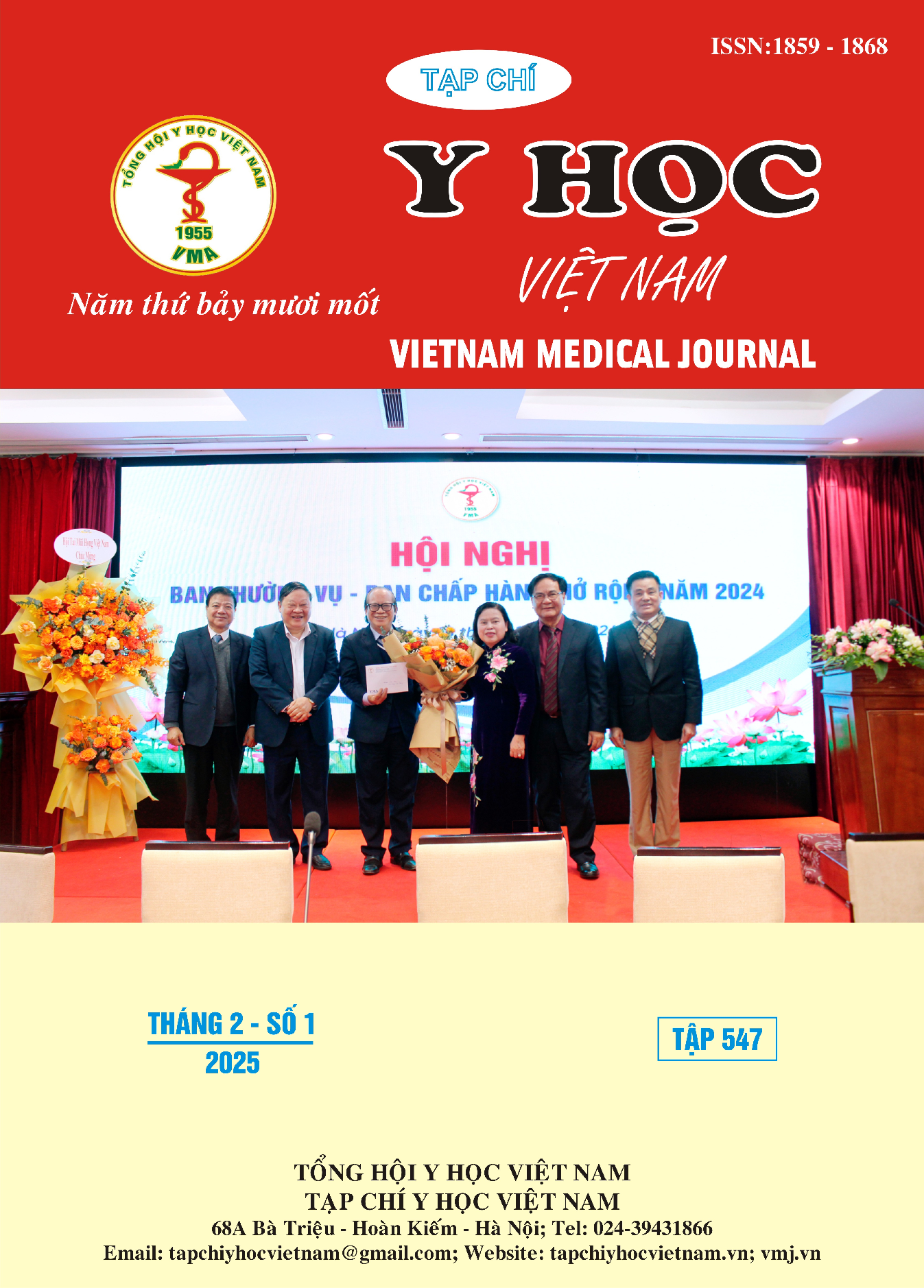COST-EFFECTIVENESS ANALYSIS OF ANTIBOTICS IN THE TREATMENT OF SEPSIS AND HOSPITAL – ACQUIRED PNEUMONIA/ VENTILATOR – ASSOCIATED PNEUMONIA IN VIETNAM
Main Article Content
Abstract
Introduction: Multidrug-resistant gram-negative infections are the primary cause of severe diseases, including hospital-acquired pneumonia/ventilator-associated pneumonia (HAP/VAP) and sepsis. The ceftazidime/avibactam (CEF/AVI) regimen has been proven effective and safe in treating sepsis and HAP/VAP. However, the high treatment cost limits its selection in clinical practice. Therefore, a cost-effectiveness analysis (CEA) of CEF/AVI compared to other antibiotic regimens in treating sepsis and HAP/VAP is necessary to provide a scientific basis for reimbursement decisions in Vietnam. Research methods: Cost-utility analysis was conducted using a sequential simulation model of multidrug-resistant gram-negative infections from the perspective of the health insurance payer. Input parameters were sourced from clinical studies, systematic reviews, and expert clinical opinions. Results: The ICER/QALY of CEF/AVI ranged from 65.22 million VND to 114.17 million VND for HAP/VAP treatment and from 39.97 million VND to 83.22 million VND for sepsis treatment compared to the comparator interventions. Conclusion: From the perspective of third-party payers, compared to the willingness-to-pay threshold of three times the GDP per capita in 2023 (305.7 million VND), CEF/AVI was cost-effective compared to meropenem, imipenem, piperacillin/tazobactam, and colistin+high-dose carbapenem for treating HAP/VAP and cost-effective compared to amikacin+high-dose carbapenem and colistin+high-dose carbapenem for treating sepsis. This study may support policymakers in considering reimbursement for CEF/AVI in treating sepsis and HAP/VAP in Vietnam.
Article Details
Keywords
Cost-effectiveness, antibiotics, sepsis, hospital-acquired pneumonia, ventilator-associated pneumonia, Vietnam.
References
2. K. T. N. Thao T.B. Nguyen, Suol T. Pham, Xuan D. Pham, Thang Nguyen, , "Hospital-acquired pneumonia in an intensive care unit in Vietnam: clinical characteristics and pathogenicbacteria," (in B), Pharmaceutical Sciences Asia,, vol. 47, no. 4, pp. 387 - 398, 2020.
3. R. K. Shields et al., "Ceftazidime-Avibactam Is Superior to Other Treatment Regimens against Carbapenem-Resistant Klebsiella pneumoniae Bacteremia," (in B), Antimicrob Agents Chemother, vol. 61, no. 8, Aug 2017, doi: 10.1128/aac.00883-17.
4. E. Tichy et al., "Cost-effectiveness Comparison of Ceftazidime/Avibactam Versus Meropenem in the Empirical Treatment of Hospital-acquired Pneumonia, Including Ventilator-associated Pneumonia, in Italy," (in B), Clin Ther, vol. 42, no. 5, pp. 802-817, May 2020, doi: 10.1016/ j.clinthera.2020.03.014.
5. W. Kong, X. Yang, Y. Shu, S. Li, B. Song, and K. Yang, "Cost-effectiveness analysis of ceftazidime-avibactam as definitive treatment for treatment of carbapenem-resistant Klebsiella pneumoniae bloodstream infection," (in B), Front Public Health, vol. 11, p. 1118307, 2023, doi: 10.3389/fpubh.2023.1118307.
6. R. Hutubessy, D. Chisholm, and T. T. Edejer, "Generalized cost-effectiveness analysis for national-level priority-setting in the health sector," (in B), Cost Eff Resour Alloc, vol. 1, no. 1, p. 8, Dec 19 2003, doi: 10.1186/1478-7547-1-8.
7. M. F. Drummond, M. J. Sculpher, K. Claxton, G. L. Stoddart, and G. W. Torrance, Methods for the economic evaluation of health care programmes. Oxford university press (in B), 2015.
8. A. Torres et al., "Ceftazidime-avibactam versus meropenem in nosocomial pneumonia, including ventilator-associated pneumonia (REPROVE): a randomised, double-blind, phase 3 non-inferiority trial," (in B), Lancet Infect Dis, vol. 18, no. 3, pp. 285-295, Mar 2018, doi: 10.1016/s1473-3099 (17) 30747-8.


